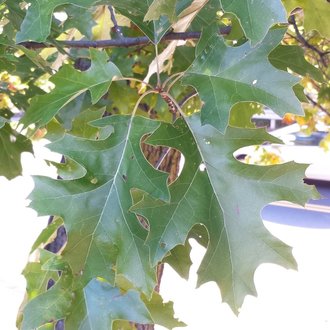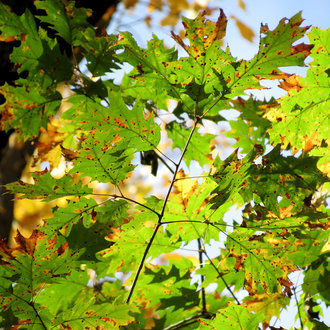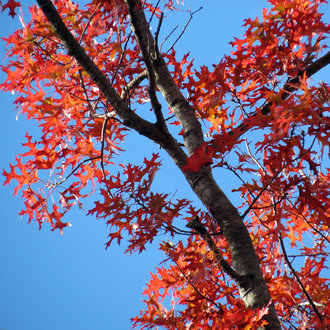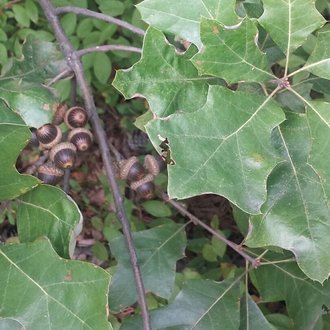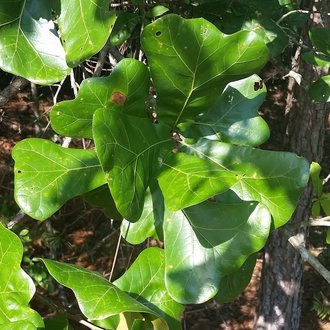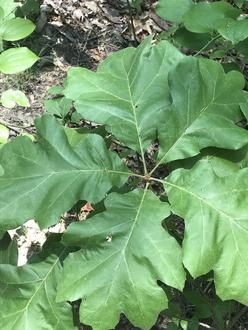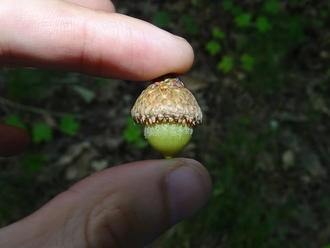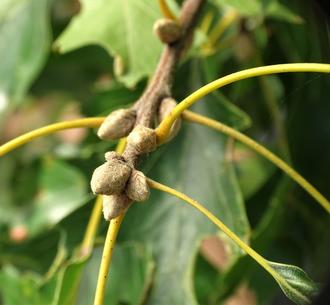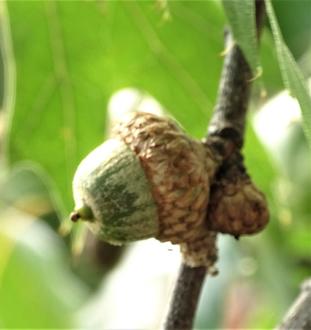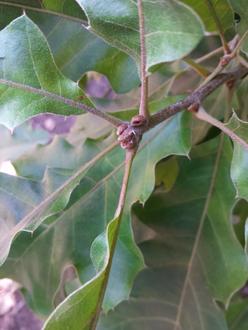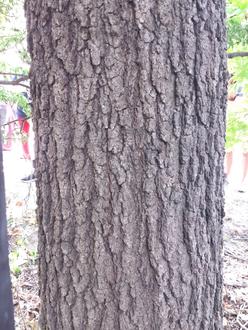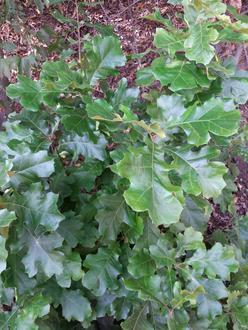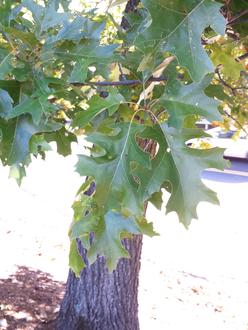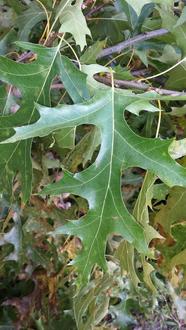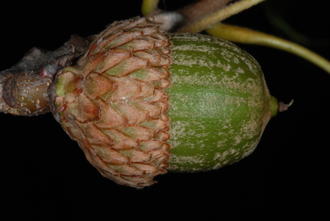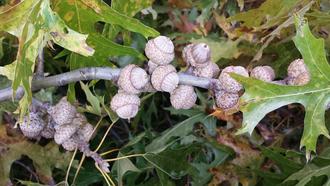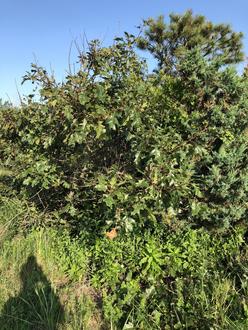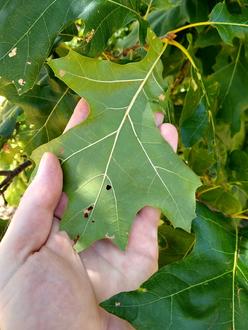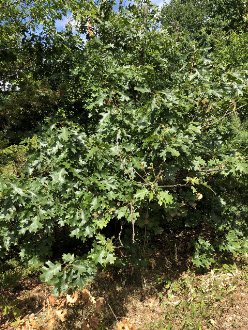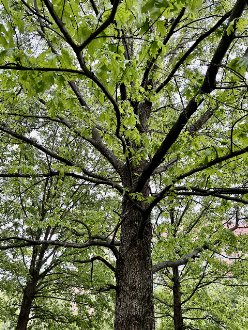Black Oak (Quercus velutina Lam.)
↑Summary
A large oak with a wide distribution across eastern North America, common in much of its range, often a canopy tree in forests. More tolerant of dry, nutrient-poor conditions than most large oaks.
↑Range - Expand
| Legend | Color |
| Native | |
| Native or Not Present |
This tentative map is based on our own research. It may have limited data on Canada and/or Mexico, and there is some subjectivity in our assignment of plants as introduced vs. expanded. Read more in this blog post.
Although this plant occurs somewhere in each of these regions, it may only occur in a small part of some or all of them.
↑Description & Identification
Both because its appearance is highly variable, and because it inhabits a wide range of habitats, black oak can be confused with a large number of other oak species.
↑Similar Plants
↑Habitat
Found in eastern and central hardwood forests as well as savannas in the transition between central forests and prairies.
Widely adaptable, but usually found on dry upland sites, sites with sandy or excessively well-drained soils, and nutrient-poor soils. The presence of black oak on a site is usually more due to favorable circumstances allowing it to get established, rather than the properties of the site itself. More drought-tolerant than northern red oak, about as tolerant as white oak, and less drought-tolerant than post oak.
Frequently found on sandy and coarse-textured soils, where it often competes better with other vegetation. Often found on south- and west-facing slopes, which produce the sunnier, drier conditions that favor it.
Occupies an intermediate stage in succession on many sites, replacing pines or black cherry, but being replaced by more shade-tolerant species including white oak, chestnut oak, hickory, maple, elm, beech, or blackgum on sites rich enough for these other species to get established. Can be a climax species on dry, nutrient-poor sites.
Found in areas with frequent, low-intensity fires, but absent from areas that have more frequent (8-12 years) higher-intensity fires. Infrequent (50-100) intervals of high-intensity fire may favor black oak by allowing enough time for trees to reach canopy dominance and produce seed, but then killing more shade-tolerant species and producing an open environment in which it can re-establish.
↑Life Cycle
Acorns germinate underground, typically in conditions where they have contact with mineral soil but are also covered with a light layer of leaf litter.
Seedlings are drought-tolerant, but often cannot survive on completely exposed sites, and do better in the presence of some protecting herbaceous vegetation. Seedlings will resprout from the root if top-killed, a process that may continue for as long as 10-20 years.
On average, seed production begins around 20 years of age, and peaks between 40 and 75 years. Good acorn crops are produced every 2-3 years. The acorns are distributed by squirrels, mice, blue jays, and other animals. The smaller acorns are more distributed by smaller animals such as blue jays and mice, relative to many oaks with larger acorns that rely primarily on squirrels. The caching of acorns in the soil by animals is the primary method of reproduction.
Trees can live 150-200 years, and are often killed by oak wilt.
↑Uses
Uncommonly used in landscaping, because its long taproot makes it difficult to transplant. When used in landscaping, valued for its adaptability to a wide range of sites.
Used for timber; the wood is similar to other red oaks, and typically sold together with them.
The bark is high in tannin and has been used for commercial tannin production. The bark has also historically been used to produce a yellow dye.
Black oak has naturally colonized lead-zinc mining sites. It has also been intentionally planted on some abandoned surface mines.
↑Related Plants
Black oak co-occurs with numerous oaks of the red oak group. It is probably most closely related to scarlet oak (Quercus coccinea) and jack oak (Quercus ellipsoidalis), both of which overlap in range.
It hybridizes readily with these and numerous other red oaks.
↑Links & External Resources
• Black Oak | The Wood Database (About This Site)
• Black Oak | Fire Effects Information System (FEIS) (About This Site)
• Quercus velutina (Black Oak) | Illinois Wildflowers (About This Site)
• Quercus velutina (Black Oak) | USDA PLANTS Database (About This Site)
• Quercus velutina | Go Botany (About This Site)
• Black Oak | iNaturalist (About This Site)
• Quercus velutina (Black Oak) | Missouri Botanical Garden Plant Finder (About This Site)
• Black Oak | Virginia Tech Dendrology Factsheets (About This Site)
• Black Oak | Silvics of North America (About This Site)
• Quercus velutina | Biota of North America Project (BONAP) (About This Site)
• Quercus velutina | NatureServe Explorer (About This Site)
• Quercus velutina | Flora of North America (About This Site)
• Black Oak | Maryland Biodiversity Project (About This Site)
• Quercus velutina Lamarck (Black Oak) | Digital Atlas of the Virginia Flora (About This Site)



